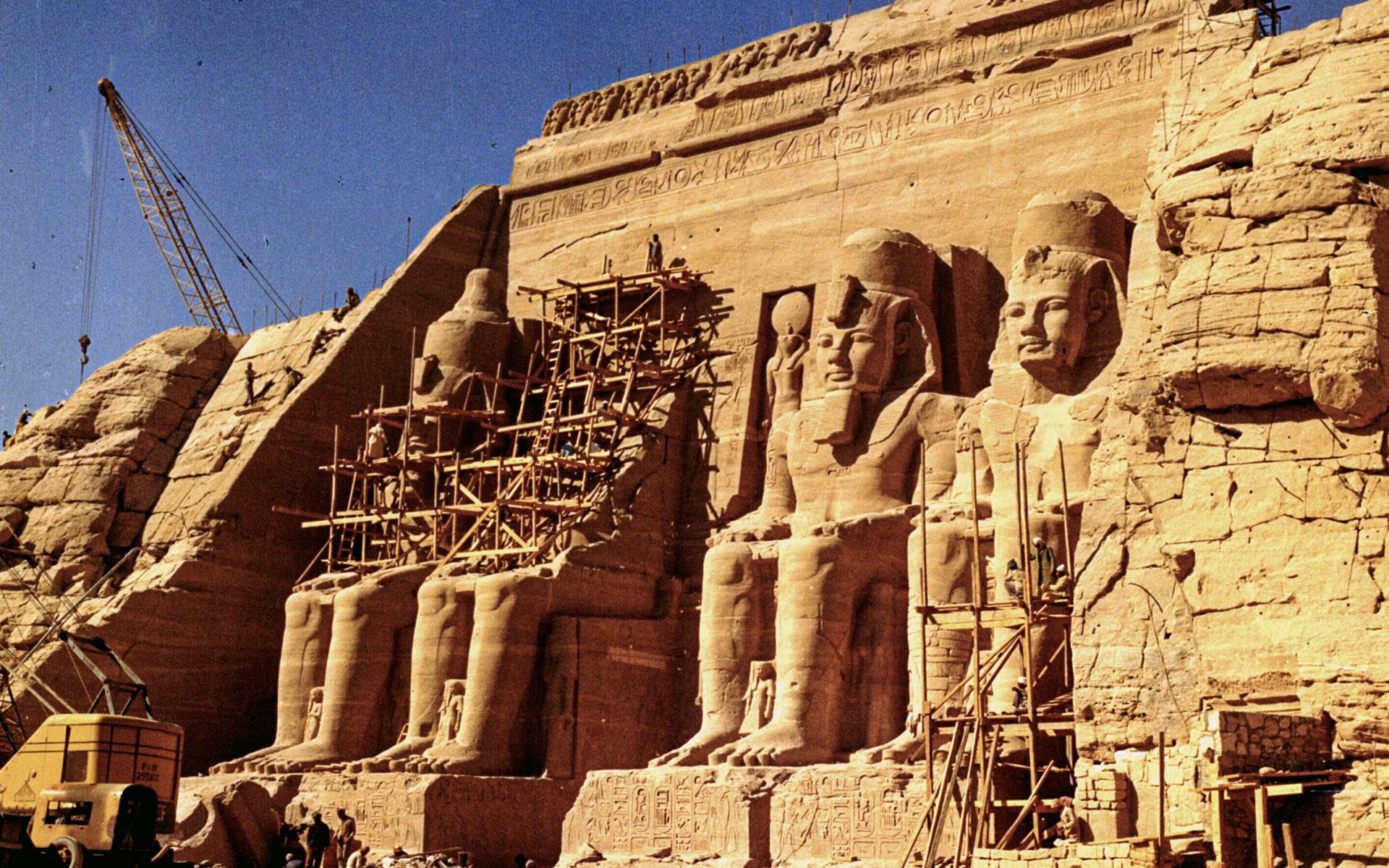Nubiana. The great undertaking that saved the Temples of Abu Simbel

On September 22, 1968, the sun rising over the valley of the Nile sketched out new shadows. This was a special day for Egypt and for the entire world, as the works performed to move the Temples of Ramses II and Abu Simbel were completed. It tooks five years of work, involving 2,000 men for a total of 40 million hours, and the involvement of the best construction companies in the world. A race against time to rescue the two temples from the flood water produced by the construction of the Assuan dam.
The salvatage of the Temples of Abu Simbel
Nubiana - The Salvage of the Temples of Abu Simbel
The incredible featwas the result of a wealth of hard work and a unique dose of engineering excellence, never seen before. For five years, the men engaged on the Abu Simbel construction site worked painstakingly and effectively managed enormous technical difficulties, which they had to resolve in a very brief space of time, and which required unusual, specific skills. Webuild was party to that feat, having been appointed to dismantle the temples, divided into 1,070 blocks, and construct an artificial hill, similar to the original one. The hill would become their new home, and the place from which they would be admired by future generations.
Webuild participated in that undertaking, being commissioned to dismantle the temples, dissected into 1,070 blocks, and build the artificial hill, similar to the original, that would become their new home, thus preserving them for the admiration of future generations.
In a little more than three years, the two temples of Abu Simbel, weighing 265,000 and 55,000 tons respectively, were moved 280 meters further inland and 65 meters higher than their original location, finding shelter in a safe place away from the risk of flooding of the Nile.
Between the spring of 1964 and the spring of 1965, the first phase of the project to move the temples of Abu Simbel got underway: a bank dike 370 meters long and 25 meters high to protect the area from the rising waters of the Nile. The large wall that represented an initial embankment was made with 380 thousand cubic meters of rock and sand and 11 thousand square meters of steel sheet piles. Alongside the dam, a drainage system, wells and culverts were built to contain the impact of the river.
Once the site was secured, the dismantling of the Abu Simbel temples began.
The second phase began with the removal of the peak above, while the facades of the temples were protected with sand pillows to prevent them from being damaged by falling fragments.
It was during this phase that the cutting of the temples into blocks took place, for which some marble cutters from Carrara were called from Italy. The temples of Abu Simbel were thus dismantled and the blocks placed in a large 44-thousand-square-meter storage area before being retrieved for reassembly.
The third phase began with the reassembly work which lasted over two years, until September 1968. The most delicate role was assigned to the surveyors, who were called upon to verify the perfect positioning of the blocks. Once the reassembly was completed, the work was concluded with the reconstruction of a surrounding that perfectly reproduced the original one, returning to the world the exact image of the Abu Simbel temples and its astronomical phenomena: Abu Simbel's perfect astronomical orientation, in the temple's original location, caused the sun's rays to penetrate into it on Feb. 21 and Oct. 21 illuminating the statues of the gods Amon-Ra and Ra-Horakhty, as well as that of the deified Ramses II himself. Only that of Ptah deliberately remained in half-light, in homage to his character as a funerary deity. When the Abu Simbel temple was moved, a small error in the location of the new site-along with, perhaps, the accumulated shift from the Tropic of Cancer over the past 3,280 years-caused the phenomenon to be delayed by one day, so that today it occurs on Feb. 22 and Oct. 22.




